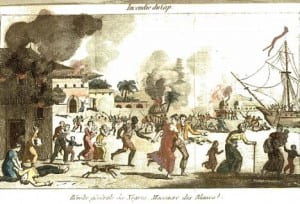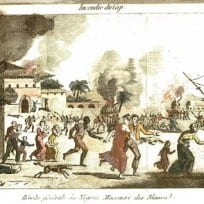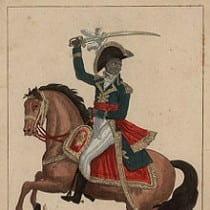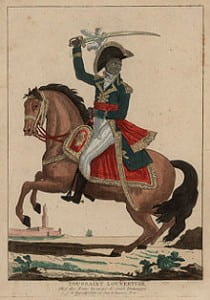An Escalation of Misery: The Evolution of Violence during the Haitian Revolution
During the time of political change in France, Saint Domingue found its residing classes shifting political mindsets. The enslaved Africans aligned themselves more with the political ideologies of the royalists and the British (Union for National Reconciliation and Defense of Human Rights). The shift came from the understanding that as white masters held more power the treatment slaves would be subjected to would only worsen. In addition, white plantation owners would be able to enslave more individuals without worry of accountability from mainland France. However, slaves in Saint Domingue began longing for the equality and freedom that they heard was happening in France. The torturous acts that were condemned onto them needed to be put to an end. No longer did slaves believe that they needed to endure being whipped, tortured by prolonged pain or burned with boiling sugar. Violence would met with violence as a corrective measure and the slaves would revolt. Laurent Dubois illustrates a scene in November of 1791 as rebels approached the Gallifet plantations as “they had as their standard “the body of a white child impaled upon a stake” (Dubois, 1). Emancipation was the goal but that did not distract many blacks from vengeful acts of brutality.
[poll id=”10″]
The Code Noir was instituted into law by King Louis XIV in March of 1685. Its intentions were to define proper treatments and conditions for those in slavery. In some ways it was a precautionary measure to ensure slaves were not subjected to excessive and cruel punishments.Though even after enactment, the code was weakly enforced. Masters did not comply with the terms of the Code Noir because the slaves were seen as property to be dealt with as they saw fit. In addition, there was nearly no corrective action from France if a slave holder disobeyed the new policy. Lack of recognition to the King Louis’ decree meant plantations owners continued to beat, enslave, deform and torture their slaves. These white actions only intensified the animosity between whites and slaves, potentially worsening the violence.
The insurgence was first led by Dutty Boukman. The insurgent slaves, fighting for their independence, sent Haiti into a civil war and ultimately a revolution. The slave movement was quick and merciless. The enslaved attacked white masters and their plantations without prior suspicion (Sutherland).They collectively wanted revenge for the injustices that the whites in Saint Domingue had done to them. Due to the initial movement on the behalf of the blacks the whites had to flee, unprepared, to Le Cap. Popkin told the story of an anonymous individual that exposed the vengeance white men acted upon. He described black men and women chained up and killed even if they were blameless (Popkin, 50). This only grew the resentment and hatred that the white plantation owners had for the blacks. Nonetheless blacks sought after a violent vendetta as well. They continued to pillage, rape, torture, mutilate and kill until, a few months later, 4,000 whites were killed and burned, 180 sugar plantations had been decimated along with hundreds of coffee and indigo plantations. It was a symbol against the atrocities done them yet equally atrocious.
 Révolte Générale des Nègres. Massacre des Blanca by Anonymous
Révolte Générale des Nègres. Massacre des Blanca by Anonymous
By 1792, there were nearly 100,000 rebel slaves that had control of a third of Saint Domingue. Simultaneously, Spain recognized that it had interest in the islands. In order for France to protect its own interests they decided to declare war on Great Britain. However, Britain, who controlled the island of Hispaniola, invaded Saint Domingue in 1793 to ally with the slaves. France recognized that further changes in civil and political rights had to be made quickly as the violence stemming from political indifference had turned unruly. By the end of the 1791 slave revolt which ended in 1794, “100,000 of the 500,000 blacks and 24,000 or the 40, 0000 whites had been killed” (Sutherland). In 1794, the National Convention abolished slavery and granted rights to all black men in the colonies.
[poll id=”11″]
In the years moving forward Haiti could continue to be characterized as a island of unsettled violence and politics. Toussaint Louverture, a former slave but not an initial leader, had returned to Saint Domingue from gaining experience as a military general in the interest of Haitian independence and the emancipation of slavery. He had been a predominant leader from May, 1794 to October, 1798. “In that time he had driven the British out of Saint- Domingue, overseen the retreat of the Spanish, ousted all genuine French authority and become commander in chief and governor general of the Saint- Domingue” (Corbett). Meanwhile France was uneasy with the idea of Toussaint ruling Haiti or André Rigaud, an prestigious mulatto military leader, due to radical violent inclinations. France recognized that war between Toussaint and Rigaud could lead to either gaining a stronger political foothold.
Toussaint Louverture Chef des Noirs Insurges de Saint Domingue by Anonymous
On June 16, 1799, Rigaud commenced the war of knives. The war of knives was a civil war fought with swords that last five months. There was considerable violence on both Rigaud and Toussaint’s side. Toussaint was noted as a relatively nonviolent man, however, he was allied with Jean-Jacques Dessalines who was particularly deadly. Dessalines butchered many during these five months. Rigaud would flee Saint Domingue into France in 1800 but would return two years later in 1802 to assist with Napoleons invasion (Corbett).
Napoleon would send Charles Leclerc, a general for the French army, in 1802 to attempt to regain control of Haiti. Between April and May on 1802, the troops fighting against Leclerc and Toussaint surrendered. Toussaint would then be arrested and thrown in prison until his death in 1803. In the meantime, the greater population in Haiti was very disturbed by the treatment of Toussaint. The larger black population recognized that if someone of Toussaints’ privilege and caliber could be subjected to such dishonorable treatment, nothing better would come to them. This led the masses to rise and revolt against the French and any other invaders. The blacks wanted emancipation and they wanted sovereignty from the French and the British. They would not stop fighting until 1804 when they became an independent nation.
The French and Haitian revolutions had conclusive similarities in violence. Vengeful destruction of French provinces and Haitian plantations served as a symbol of political unrest. This unrest was spawned from brutal unequal treatment based on racial prejudices. The violence stemmed originally from terrible treatment of slaves and sought changes in legislation that were being continuously ignored in Saint Domingue. After years of nearly no legislative changes, brute and violent force was taken. The government and oppressors were inevitably forced to reluctantly reevaluate the emancipation of slavery. The violence had been substantial for so long that the will of the people had transformed into hate and spite that only murder, torture, rape, and destruction could result. It was not until 1804, 13 years after the outbreak of the slave rebellion that slavery was truly emancipated and independence was brought to Haiti.
Question to Consider:
Do you believe the Haitian Revolution was more separated and unique then the French Revolution?


